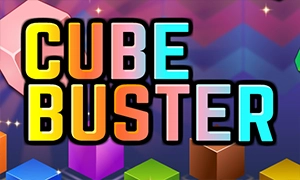Sudoku Classic
Classic Sudoku Game. Click on a cell to enter a number. You can enter numbers from 1..9. Every number can only occur once per row, column and 9x9 box. To delete a number using the numeric keypad in the game, you must enter the number again.
Sudoku Classic
Immerse yourself in the timeless elegance of Japan's most celebrated number puzzle, where logical deduction meets mathematical precision in a 9x9 grid of pure intellectual challenge. Master the art of constraint-based reasoning as you strategically place digits to satisfy the fundamental rule that governs this meditative yet mentally stimulating game.
How to Play
Sudoku Classic presents you with a partially filled 9x9 grid divided into nine 3x3 sub-grids, each cell awaiting the placement of a single digit from 1 to 9. Your mission is to complete the entire grid while adhering to Sudoku's three fundamental constraints: each row, each column, and each 3x3 box must contain all digits from 1 to 9 exactly once, with no repetitions permitted in any direction.
Begin by scanning the grid to identify cells where only one digit can logically fit based on the existing numbers in the intersecting row, column, and 3x3 box. These "naked singles" provide your starting foundation and help establish the logical framework for more complex deductions. Click on any empty cell to select it, then choose the appropriate digit from the number pad interface or use your keyboard to enter values directly.
As you progress, employ increasingly sophisticated solving techniques. Look for "hidden singles" - situations where a digit can only appear in one location within a row, column, or box, even if multiple digits could theoretically fit in that cell. Practice identifying "pointing pairs" and "box/line reduction" patterns where the placement of numbers in one area eliminates possibilities in adjacent regions.
Advanced players utilize techniques like "naked pairs" and "hidden pairs" - situations where two cells in the same unit can only contain the same two digits, allowing you to eliminate those digits from other cells in that unit. The most challenging puzzles may require "X-wing," "swordfish," or even more esoteric pattern recognition techniques that demonstrate the remarkable depth and elegance of Sudoku's logical structure.
Controls
Desktop:
- Left Click: Select a cell for number entry
- Number Keys (1-9): Enter digit into selected cell
- Delete/Backspace: Clear selected cell
- Arrow Keys: Navigate between cells
- Space: Toggle pencil marks for candidate numbers
- Tab: Cycle through empty cells automatically
Mobile & Tablet:
- Tap: Select cell for digit placement
- Number Pad: Touch numbers to enter values
- Double Tap: Clear cell contents
- Long Press: Access pencil mark mode for notation
- Swipe Gestures: Navigate quickly across the grid
- Pinch Zoom: Magnify grid for detailed examination
Game Features
- Authentic Japanese Design: Experience Sudoku in its purest form with clean, traditional grid layouts and intuitive number placement
- Progressive Difficulty Levels: Master easy puzzles before advancing to medium, hard, and expert challenges that test advanced solving techniques
- Pencil Mark System: Use candidate notation to track possible numbers in each cell, essential for complex logical deductions
- Mistake Detection: Receive immediate feedback when moves violate Sudoku's fundamental rules, helping you learn proper constraint logic
- Hint System: Access strategic guidance that teaches solving techniques rather than simply providing answers
- Timer and Statistics: Track your solving speed and improvement over time while monitoring accuracy and efficiency metrics
- Auto-Save Progress: Never lose your work with automatic puzzle state preservation across gaming sessions
- Multiple Color Themes: Customize your visual experience with various grid designs and number styling options
About the Game
Sudoku Classic honors the rich intellectual tradition of this remarkable puzzle that has captivated minds worldwide since its modern popularization in Japan during the 1980s. While number-based puzzles have ancient roots, modern Sudoku represents a perfect synthesis of mathematical constraint logic and accessible gameplay that appeals to both casual puzzle enthusiasts and serious logical reasoning devotees.
The game's elegance lies in its deceptively simple rules that generate profound complexity. With only basic arithmetic knowledge required, Sudoku challenges players to develop sophisticated pattern recognition, logical deduction, and systematic thinking skills. Each puzzle represents a unique logical ecosystem where every number placement creates cascading effects throughout the interconnected grid structure.
The meditative qualities of Sudoku solving have made it a popular mental exercise for cognitive health and stress relief. The focused concentration required to track multiple constraints simultaneously provides a form of active meditation that many players find deeply satisfying. The incremental progress from simple logic to complex pattern recognition mirrors personal growth and intellectual development.
The mathematical foundation of Sudoku reveals fascinating connections to Latin squares, graph theory, and combinatorial optimization. Advanced players often appreciate that they're engaging with concepts that have applications in computer science, cryptography, and mathematical research, making each solving session a practical exercise in applied logic and systematic problem-solving methodology.
Tips and Tricks
- Start with Constraint Analysis: Always begin by identifying cells where only one number can fit, establishing a solid foundation for logical deduction
- Scan Systematically: Develop consistent scanning patterns for rows, columns, and boxes to avoid missing obvious placements
- Use Pencil Marks Strategically: Mark candidate numbers in cells to track possibilities and identify elimination patterns
- Focus on High-Constraint Areas: Prioritize regions with many filled cells, as these offer the most elimination opportunities
- Practice Pattern Recognition: Learn to quickly identify common solving techniques like naked pairs, pointing pairs, and box/line reductions
- Work Multiple Areas Simultaneously: Don't get stuck on one region - progress in one area often unlocks solutions elsewhere
FAQ
Q: What makes a Sudoku puzzle valid and solvable?
A: A valid Sudoku puzzle has exactly one unique solution that can be reached through logical deduction alone, without requiring guessing or trial-and-error methods.
Q: How do I know if I've made a mistake?
A: The game will typically highlight errors when you place a number that violates the row, column, or box constraint rules. Additionally, if you reach a point where no valid moves remain, backtrack to find the error.
Q: What are pencil marks and when should I use them?
A: Pencil marks are small candidate numbers you can place in cells to track which digits are still possible. They're essential for intermediate and advanced puzzles where multiple possibilities exist for each cell.
Q: How do I improve my solving speed?
A: Practice systematic scanning techniques, learn to recognize common patterns quickly, and develop efficient pencil marking strategies. Speed comes naturally with experience and pattern familiarity.
Q: Are there different types of Sudoku variants?
A: Yes! While this is classic 9x9 Sudoku, many variants exist including different grid sizes, additional constraints, and modified rules that create new solving challenges.
Q: What's the difference between easy and expert difficulty?
A: Easy puzzles can be solved using basic techniques like naked singles and hidden singles, while expert puzzles require advanced pattern recognition and complex logical chains to reach the solution.
Ready to embrace the zen of logical deduction? Begin your Sudoku Classic journey and discover the profound satisfaction of constraint-based puzzle mastery!















